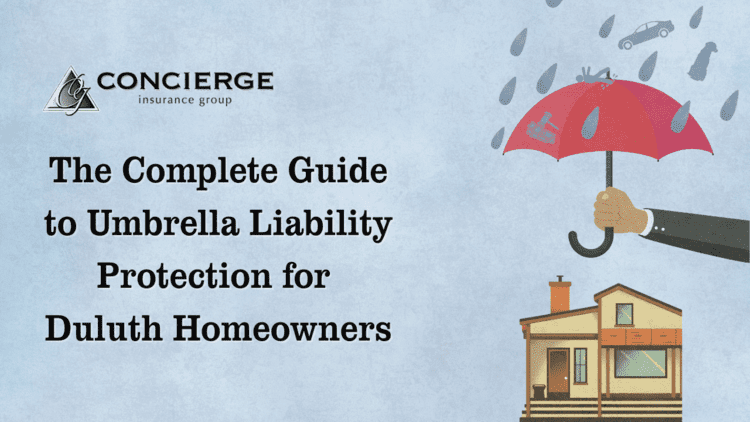
Homeowners in Georgia are increasingly concerned about protecting their most valuable asset. Umbrella liability coverage provides extra security beyond standard home and auto insurance policies, addressing unforeseen claims that could threaten personal finances. This article explains the fundamentals of umbrella liability coverage, outlines personal liability risks, highlights the benefits of comprehensive policies, compares providers, and demystifies common misconceptions. By understanding how umbrella coverage works, homeowners gain valuable insights into safeguarding their assets while maintaining peace of mind.
Key Takeaways
- Umbrella liability policies offer extra liability protection that goes beyond basic home insurance.
- Assessing personal liability exposure helps determine the amount of extra coverage needed.
- Comprehensive umbrella coverage protects against major legal fees, financial losses, and unexpected lawsuits.
- Comparing providers and understanding common misconceptions can lead to better insurance choices.
Understanding Umbrella Liability Coverage for Homeowners
Umbrella policies extend liability coverage by supplementing existing insurance policies. They typically offer higher coverage limits and broader protection than standard homeowners policies. This type of coverage is designed to protect against claims arising from accidents, injuries, or property damage that exceed typical liability limits. For example, if a visitor is injured on your property and sues for significant damages, an umbrella policy can cover expenses that surpass regular homeowners insurance limits. These policies also cover legal defense costs, which can be substantial in complex cases.
Importance of Coverage Limits and Exclusions
It is crucial for homeowners to understand both coverage limits and exclusions present in umbrella liability policies. Coverage limits specify the maximum amount the insurance company will pay, while exclusions detail what is not covered. This information helps determine if the policy meets personal financial risk levels. Knowing these details aids in selecting a policy that complements existing insurance and protects against unexpected financial burdens arising from lawsuits, accidents, or severe injuries.
How Umbrella Liability Protects Your Home Assets
Umbrella liability coverage protects the equity in your home by providing an additional layer of financial security. In the event of a lawsuit that exceeds your standard coverage, an umbrella policy steps in to cover the difference. This safeguard minimizes the risk of losing your home or other personal assets. By bridging the gap between primary policy limits and the actual costs incurred, umbrella insurance ensures that your home investments and savings remain secure.
Assessing Your Personal Liability Exposure
Identifying Risks Associated With Homeownership
Homeownership comes with inherent risks that extend beyond physical property damage. Risks can include accidents on your property, such as slip-and-fall incidents, dog bites, or even unanticipated lawsuits from neighbors. Each risk factor increases potential financial exposure. Homeowners should review instances in the past or near misses to understand how accidents could quickly escalate into costly legal battles. This awareness is key to deciding whether umbrella coverage is essential.
Evaluating Common Scenarios That Can Lead to Lawsuits
Common scenarios leading to lawsuits involve injuries during gatherings, maintenance negligence, or even disputes with service providers. If a guest suffers a serious injury during a party or if a contractor is injured due to unclear safety practices, lawsuits can arise. Such cases often result in expensive legal fees and settlements. Evaluating these scenarios helps homeowners identify potential vulnerabilities and determine how much extra coverage might be necessary to avoid financial devastation.
How to Calculate Your Coverage Needs
Calculating the necessary umbrella coverage involves assessing your total assets and potential risks. A simple method is to add the net value of your home, savings, and investments, and then compare that against the maximum liability limits of your current policies. Financial experts often suggest umbrella coverage equal to five to ten times your net worth. This calculation allows you to cover high-cost lawsuits and mitigate the risk of losing valuable assets.
Benefits of Comprehensive Umbrella Liability Coverage
Protecting Against Large Financial Losses
Umbrella liability insurance provides substantial protection when a claim exceeds the limits of your primary policies. With a wide scope covering incidents such as catastrophic accidents on your property, this additional layer can be the difference between financial ruin and stability. For many homeowners, the ability to transfer the risk of large, unexpected legal judgments makes umbrella insurance an essential tool for peace of mind. The extended limits often come into play when unforeseen events occur, saving personal savings and investments from being depleted.
Coverage for Legal Fees and Court Costs
Legal fees in the event of a lawsuit can quickly escalate. Umbrella liability policies typically include coverage for court costs and legal representation fees. This benefit ensures that you do not face overwhelming out-of-pocket expenses during lengthy judicial proceedings. By covering legal fees, umbrella insurance helps maintain your financial stability, allowing you to focus on resolving the situation rather than worrying about mounting bills.
The Peace of Mind That Comes With Added Protection
With extra coverage in place, homeowners experience a significant reduction in stress. Knowing that an umbrella liability policy is protecting assets ensures that even in the worst-case scenario, financial ruin is unlikely. This sense of security allows homeowners to enjoy their property and community without the constant worry of potential lawsuits. The expanded protection also reassures families that their long-term financial health is safeguarded.
Comparing Umbrella Liability Providers
What to Look for in Insurance Companies
When comparing providers, it is important to consider the company’s reputation, financial stability, claim settlement ratio, and customer service quality. Look for insurers with a proven track record of efficiently handling claims. Researching each company can reveal hidden terms and conditions affecting the policy’s overall value. Additionally, comparing premium prices against coverage limits helps determine which provider offers the best balance between cost and protection.
Reading Customer Reviews for Better Insight
Customer reviews offer real-world insights into an insurer’s performance. They reveal common issues as well as strengths such as fast claim processing and helpful customer support. Reading a range of reviews across different platforms can provide a balanced view of the company’s merits and reliability. It is also beneficial to seek recommendations from trusted insurance agents or financial advisors who have firsthand experience with various providers.
Analyzing Policy Options and Premiums
Before purchasing umbrella liability coverage, analyze detailed breakdowns of policy options including deductibles, limits, and exclusions. Compare premiums and assess annual cost versus the protection provided by each policy. Make sure that the policy can be tailored to meet unique personal liability exposure and existing coverage gaps. Doing so ensures you are not overpaying for unnecessary coverage while obtaining the necessary financial safety net.
Steps to Secure Umbrella Liability Coverage
Getting a Quote Tailored for Your Needs
Start by obtaining personalized quotes from several reputable insurance providers. Provide detailed information about your home, property value, and any additional liabilities to ensure an accurate quote. Tailored quotes help you compare the nuances of each policy and identify the one that best fits your financial situation and protection needs.
Understanding the Application Process
Understanding the application process is essential. Generally, you will need to review your current insurance policies, complete an application form, and provide asset documentation. The insurer may assess risk factors personally to offer the most accurate coverage. This process helps you identify any potential issues early and ensures that you know exactly what to expect as you secure additional coverage.
Reviewing Your Current Insurance Policies
Before securing umbrella liability coverage, review your existing insurance policies to note their limits and exclusions. Confirm that the umbrella policy complements your current coverage rather than overlapping unnecessarily. This review enables you to spot any coverage gaps and ensures that the additional policy maximizes asset protection effectively.
Common Misconceptions About Umbrella Liability Coverage
Clarifying the Difference Between Home Insurance and Umbrella
A common misconception is that standard home insurance already covers all liabilities. In reality, home insurance covers specific events while umbrella insurance provides extra protection for claims that exceed those limits. This additional coverage is critical when facing high-cost lawsuits, bridging gaps that home insurance cannot cover.
Addressing Myths About Coverage Extent
Some believe that umbrella policies are overpaying for unnecessary coverage. However, statistics show that lawsuits and major claims, although infrequent, can cost homeowners hundreds of thousands of dollars. Umbrella policies are designed to cover these rare but catastrophic events, providing a safety net that standard policies overlook.
The Truth Behind Costs and Affordability
Another myth is that umbrella liability coverage is prohibitively expensive. In reality, for a relatively low annual premium, homeowners can secure protection equivalent to millions of dollars. This affordability makes it a cost-effective way to safeguard assets and ensure long-term financial security.
Umbrella liability coverage is a critical layer of protection for homeowners, particularly in Georgia, where property investment is significant. It bridges gaps in standard insurance policies by covering legal fees, court costs, and unforeseen financial losses. By assessing personal liability risks, comparing insurers, and understanding common misconceptions, homeowners can confidently choose a policy that offers the best value and security. Ultimately, securing comprehensive umbrella coverage is a proactive step towards protecting your assets and ensuring peace of mind.
Frequently Asked Questions
What exactly is umbrella liability coverage? A: Umbrella coverage is additional liability protection that supplements existing policies by covering claims exceeding standard limits.
How do I know if I need umbrella insurance? A: Homeowners with significant assets or those facing high-liability risks should consider umbrella insurance to protect their financial future.
Are umbrella policies expensive? A: Generally, they offer extensive coverage at a relatively low premium, making them a cost-effective safeguard for your assets.
Can umbrella insurance cover lawsuits from accidents on my property? A: Yes, it extends your primary policy limits to cover major lawsuits and legal expenses arising from property-related incidents.
How do I choose the best umbrella liability provider? A: Compare customer reviews, policy options, premiums, and the insurer’s financial stability to select a provider suited to your needs.


